Purdey Celebrates 200 Years With Commemorative Guns, Apparel and Accessories

Superb handcrafted shotguns and rifles from James Purdey & Sons have been venerated by shooting aficionados and royalty alike ever since the company opened its doors at 4 Princes Street, near Leicester Square, London, in 1814.
Now, 200 years later, Purdey marks the illustrious occasion with the Purdey Bicentenary Trio gun collection, which features a new 12-gauge side-by-side game gun, a 20-gauge Damascus over-and-under as well as a .470 express rifle. The Purdey Bicentenary Trio is accompanied by new sets of Purdey apparel and accessories to enjoy the momentous celebration in high style.
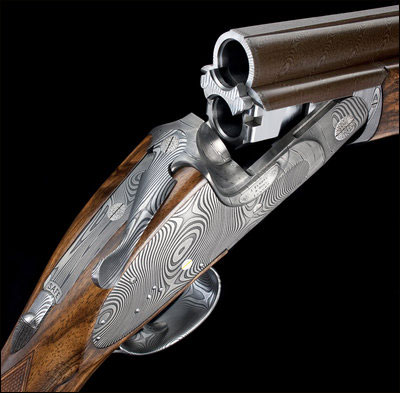 The 20-gauge Damascus over-and-under is a member of the Purdey Bicentenary Trio.
The 20-gauge Damascus over-and-under is a member of the Purdey Bicentenary Trio.Each gun in the Purdey Bicentenary Trio will feature engravings characteristic of the era in which they were created and bear a Bicentenary logo along with a special serial number. The Purdey Bicentenary Trio will be presented with a floor-standing display case also bearing the bicenterary logo. A companion specially commissioned oak and leather treble motor case is based on an original that was custom-made in the early 1930s for King George VI’s Purdey guns.
Although the bicentennial of James Purdey & Sons is observed with the establishment at 4 Princes Street, the company’s origin dates back to the 1690s when John Purdey purportedly traveled from east Scotland in pursuit of work. Once in London, he joined family members who prospered there.
John’s second son, James, was born in 1739. James was a blacksmith in the Minories — the gunmaking quarter near the Tower of London. It’s doubtless that James performed barrel work on behalf of local gunsmiths.
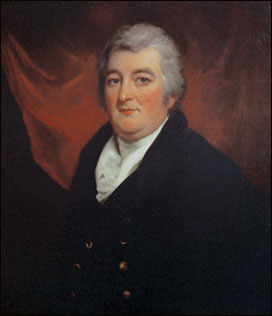 James Purdey the Founder.
James Purdey the Founder.James’ own son, also christened James, was born in August 1784. He would enter an apprenticeship at age 14 with a brother-in-law, the gunsmith Thomas Keck Hutchinson, and initiate the Purdey gunmaking tradition. Under Thomas, the young James forged Damascus barrels from old horseshoe nails for flintlocks.
In 1805 James finished his apprenticeship at Hutchinson and subsequently earned a position with Joseph Manton of Oxford Street. Manton was hailed as “The greatest artist in firearms that ever the world produced” by the illustrious marksman, Colonel Peter Hawker.
After three years at Manton, James had risen to Head Stocker. It was in 1808 when James saw an opportunity to advance his education and career by joining the prestigious gunmaker, Reverend Dr. Alexander Forsyth, at 10 Piccadilly. Dr. Forsyth had invented a new lock technology and James spent the next four years at Forsythe as a lock-filer and stocker.
Finally, James started his own shop in 1814 at 4 Princes Street. From the modest storefront, he set out building single and double flintlock guns, dueling pistols and rifles.
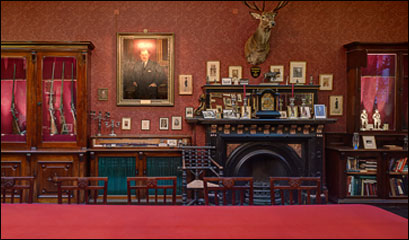 Purdey’s Audley House Long Room today.
Purdey’s Audley House Long Room today.James’ reputation at Manton’s and Forsyth’s contributed to his early success. Specializing in bespoke guns, he appealed to a distinguished clientele. To better serve them, James expanded into shooting equipment and accessories.
The venture prospered. On August 1, 1826, James took occupancy of 314½ Oxford Street, the site of his former master, Manton. It became the most prominent gun shop in London. James’ customers included English aristocracy and Indian royalty. Charles Darwin had ordered guns and supplies for the voyage of HMS Beagle and Queen Victoria commissioned a pair of double-barreled pistols for presentation to the Imam of Muscat.
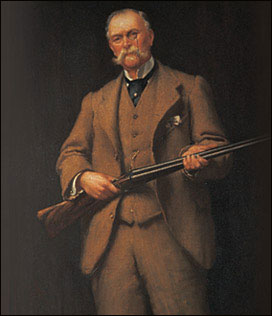
James Purdey the Younger.
Peer recognition officially arrived in 1841 when James was voted into the prestigious Master of the Worshipful Company of Gunmakers of the City of London.
James had married in the early 1800s. The couple’s initial child was a girl named Mary, after her mother. On March 19, 1828, the couple’s first son was born. Known as James the Younger, he would in due course lead the firm through groundbreaking innovations that spanned the eras of muzzle-loading flintlocks to breech-loading, hammerless ejectors.
James achieved a milestone in 1857. Edward, Prince of Wales granted the company a Royal Warrant of Appointment as a gunmaker issued to tradespeople who provide products or services to a royal court or personages.
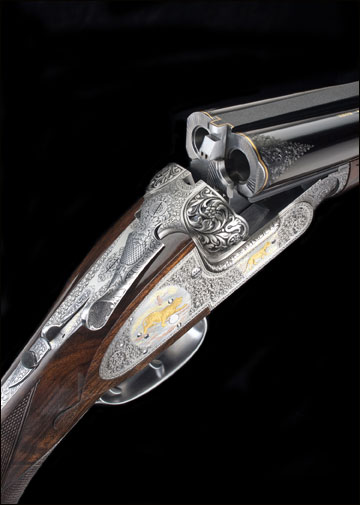 The Purdey Bicentenary Trio .470 express acknowledges the innovation in rifles sustained for 200 years by James Purdey & Sons.
The Purdey Bicentenary Trio .470 express acknowledges the innovation in rifles sustained for 200 years by James Purdey & Sons.In 1865, James and his son, James the Younger, modernized the low-velocity, short-range rifles of the time to accommodate ammunition that was faster and more accurate over longer ranges. Their accomplishment resulted from boring deeper grooves in the barrel — eliminating the time-consuming practice of ramming bullets down onto the powder charge. Simultaneously, the Purdeys offered a breech-loaded, two-winged bullet. The bullet’s high speed and flat trajectory reminded James the Younger of the new express trains — coining the term “express rifle.”
On February 12, 1868 the Prince of Wales, who became King Edward VII, granted Purdey the Royal Warrant of Appointment. Ten years later another Royal Warrant was issued by Queen Victoria. Royal Warrants have been regularly awarded to Purdey through the years.
In 1870, Purdey patented the now-ubiquitous, thumb-operated mechanism that allows shooters to open breech-loading guns while maintaining grip on the stock. The Purdey innovation proved to be revolutionary during a period when the underlever action was typical on breech loaders.
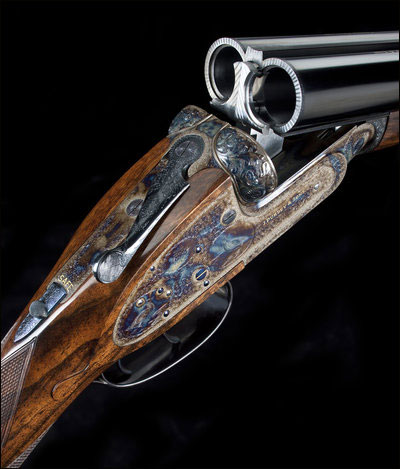 Purdey’s patented thumb-operated lever is clearly visible on the Purdey Bicentenary Trio 12-gauge side-by-side game gun.
Purdey’s patented thumb-operated lever is clearly visible on the Purdey Bicentenary Trio 12-gauge side-by-side game gun.In 1879, Purdey stockermaker Frederick Beesley invented the Beesley self-opening system, which employs residual energy of the mainspring into opening the gun and ejecting the spent cartridges. Patented in 1880, all Purdey side-by-side hammerless guns and rifles have used it ever since.
James acquired leases at 57–58 South Audley Street, Westminster, and between 1881 and 1882 built Audley House — a spacious and fashionable concern highlighted by sumptuous showrooms. The Audley House Long Room, originally a bustling office, is revered as a cherished destination for gun enthusiasts.
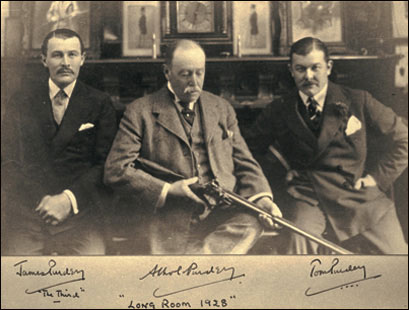 James, Athol and Tom Purdey in the Audley House Long Room.
James, Athol and Tom Purdey in the Audley House Long Room.As the business thrived, James the Younger had a son, Athol, who would go on to operate the company through the flourishing Edwardian era and into World War I — overseeing Purdey’s entry into weapons components and equipment for the British War Department.
Athol’s sons, James and Tom, both joined the firm in the 1920s, taking over its management in 1929. The number of gun orders rose steadily during the struggling economy that followed World War I, but difficult times returned with the onset of World War II. Once again, Purdey supported the war effort by manufacturing precision tools and gauges.
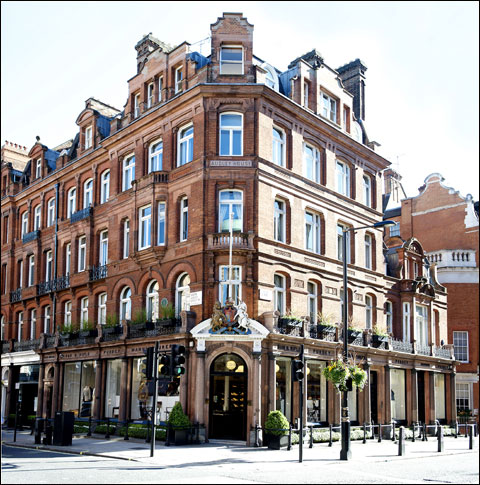 Audley House
Audley HouseAlthough Purdey had been making over-and-unders since 1923, it acquired competitor James Woodward & Sons of London in 1948. The Woodward purchase gave Purdey access to long guns celebrated for agility and strength — especially the over-and-unders. Purdey initiated an enhanced design in 1950 that incorporated Woodward’s elements. The synthesis has been progressively refined over the decades and remains vibrant today.
In the aftermath of World War II, with the premium gun trade looking bleak, Jim and Tom Purdey sold their majority shares to Hugh and Victor Seely, although the brothers kept a hand in supervision of the operation. The company passed to the Purdey’s nephew, the Honorable Richard Beaumont, who held ownership until 1994. When Tom Purdey retired in 1955, Richard Beaumont assumed leadership of Purdey. Richard’s wife, Lavinia, led the foray into Purdey’s quality shooting apparel and designed the early clothing herself.
 The tradition of fine shooting apparel continues today with a collection of clothing and accessories from the 2014 Purdey Brochure.
The tradition of fine shooting apparel continues today with a collection of clothing and accessories from the 2014 Purdey Brochure.In 1977, at a family gathering in Wales, Richard Beaumont proposed to his young cousin, Nigel Beaumont, the idea of entering into an actioner’s apprentice at Purdey. Over the years, Nigel ascended to Managing Director and ultimately Chairman in 2007.
The Beaumont’s 50 years of Purdey control ended in 1994 with the sale to luxury-goods conglomerate, the Richemont Group , which maintained ownerships in Cartier, Van Cleef & Arpels, Piaget, Vacheron Constantin, Jaeger-LeCoultre, IWC, Panerai and Montblanc. Concurrently, Richard Beaumont appointed Athol Purdey’s grandson, Richard Purdey, as Chairman. Richard Purdey is the great-great-great grandson of the James Purdey the Founder. The company has maintained an unbroken historical lineage since its inception.
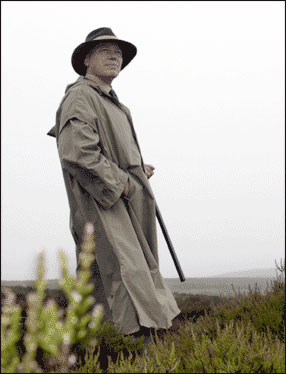 Nigel Beaumont
Nigel BeaumontThe Purdey Bicentenary Trio, announced in February 2014, is a continuation of Purdey’s time-honored traditions.
The 12-gauge side-by-side Game Gun will also have “J. Purdey & Sons” inlaid in gold on the action plates and underside of the gun in customary script. It will feature engraved game birds and scrollwork, a style developed by Harry Knell and his son Henry in the late 19th century. Purdey’s 12-gauge side-by-side, manufactured in 1880, is deemed exemplar of the original, time-honored side-by-side sporting shotgun except for the addition of ejectors in 1888.
Purdey’s 20-gauge Damascus over-and-under Gun will not be engraved, apart from the gunmaker’s name inlaid in gold. It will be made from Damasteel, a specialized steel devoid of impurities and with a tensile strength three times greater than steel normally used for gunmaking, using state-of-the-art 21st century techniques. The Damascus patterning is unique to each gun and harkens back to the heritage of Purdey when James fashioned Damascus barrels from old horseshoe nails.
The Purdey Bicentenary Trio also includes the .470 nitro express double rifle as homage to the company’s development of the express technology. Individual steps of the gunmaking process will be captured as a photographic study for a future visual narrative about the Trio’s entire production.
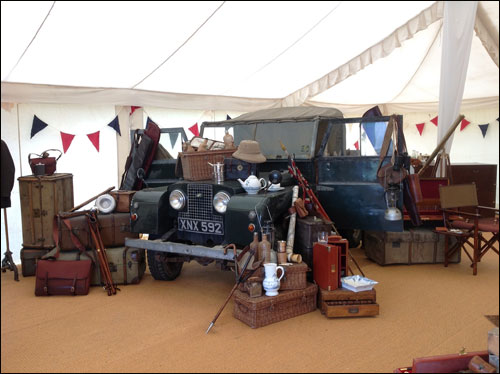 The Purdey tent at the 2013 CLA Game Fair in the UK.
The Purdey tent at the 2013 CLA Game Fair in the UK.For traveling, Purdey created a motor case made of oak and leather lined with red goatskin. The French-fitted motor case, designed after King George VI’s in the 1930s, will include three gold-plated tools with horn handles.
To display the Trio at home, Purdey designed a gun cabinet with a 360-degree view of the guns inspired by a stand found in the gunmaker’s Long Room at Audley House, London in the 1880s. Purdey commissioned the cabinet to Hatfield’s of London. The hand-built stand will be constructed from antique mahogany.
In conjunction with the introduction of the Trio, Purdy presented an exclusive collection of bicenterary accessories.
 “200 Years of Excellence”
“200 Years of Excellence”Among them is a limited edition book titled “200 Years of Excellence.” Covered in beautiful goatskin with gold embossed lettering, only 200 copies have been produced, each signed and numbered.
The Purdey Silverware collection comprises unique pieces made from fine, planished silver. It features a limited run of flasks and shotgun cartridge cups. Created using rare, antique molds, the collection has been handmade in workshops across England, reviving truly old techniques. Customers can have their initials engraved onto any piece of Purdey silverware. A Position Finder set of 10 planished and handmade silver cups, numbered 1-10, is presented in a luxury London tan carry case.
There is also a limited release of Shooting Break China, inspired by early English Delftware. With scenes depicting James Purdey’s journey from humble country beginnings to London’s Mayfair, all pieces are painted in traditional sepia and handmade in the Cotswolds. The range includes desk bricks, coin trays, pen pots and lidded trinket boxes. Customers are also able to commission bespoke, hand-painted designs, including shooting scenes or their own country estates.
 Traditional gun-cleaning accessories from Purdey.
Traditional gun-cleaning accessories from Purdey.A unique group of statement gun leathers will be part of the Purdey Bicentenary Collection. Crafted from traditional bridle hide, the collection features intricate hatched leather, which is unique to Purdey and reminiscent of the checkering on Purdey’s finest guns and rifles. It includes cartridge bags, cartridge magazines and gun covers, wallets and gun certificate holders. Handmade in England, these statement leathers are suede lined with English brass detailing. All pieces are available in dark brown and traditional London tan.
Purdey’s 1814 cartridges is the first new line from James Purdey & Sons in over 30 years. These ambassador game cartridges, available in 12-, 20- and 28-gauge, are coated with a water-resistant lacquer and paper cased for exemplary ejection. The commemorative cartridges carry the Purdey 1814 mark, although they can be personalized with the name of your shoot or estate. They will be available from June 2014.
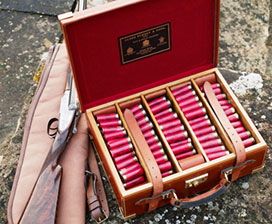 A box of Purdey cartridges.
A box of Purdey cartridges.Purdey collaborated with one of the last remaining traditional knife makers in the UK, Geoff Hague, on an exclusive bicentenary family of stamped and dated knives, available in Audley House starting May 2014.
With blades handcrafted from carbon steel and hardwood handles, the range comprises a fixed bladed knife, a general-purpose field knife and a folding knife, each intricately engraved to echo the craftsmanship seen throughout Purdey’s guns and rifles. Purdey also commissioned a one-off bicenterary knife with traditional scroll engraving. Not currently for sale, this unique piece will be on display at Audley House.
Purdey will also display there a pair of miniature silver shotguns, delicately crafted and engraved in Purdey’s London workshop with bicentenary scrolling. A collectable replica of the 1914 Purdey side-by-side miniature guns, the barrels are even engineered to break like a real gun. Exhibited in a presentation box lined in Audley red satin, there are just three pairs of these very special guns on view from March 2014.
Deborah McKown is the Editor of Shotgun Life. You can reach her at contact@shotgunlife.com.
Useful resources:
The web site of James Purdey & Sons
Click to download the Purdey Brochure
Deborah McKown is the Editor of Shotgun Life. Please send your comments and questions to letters@shotgunlife.com.


Comments